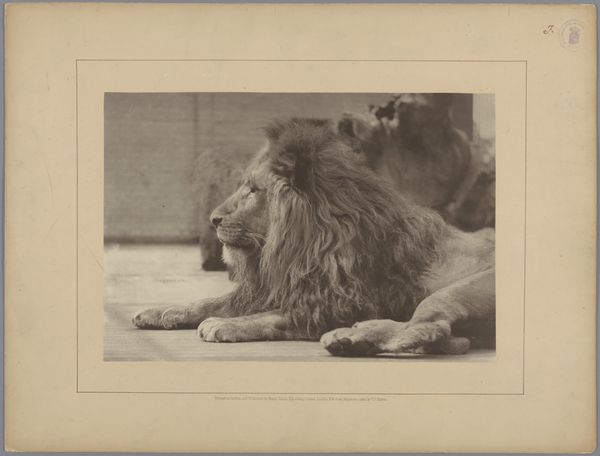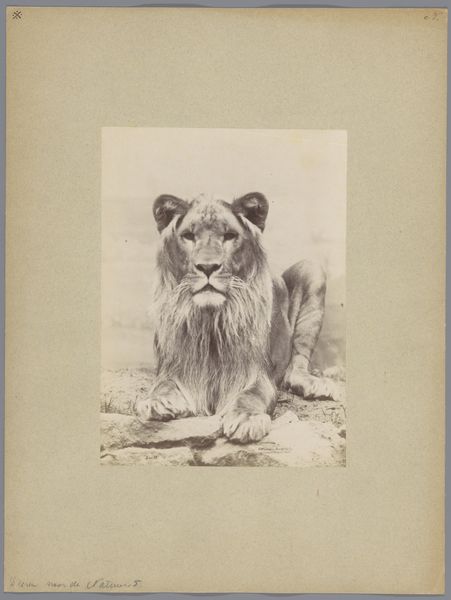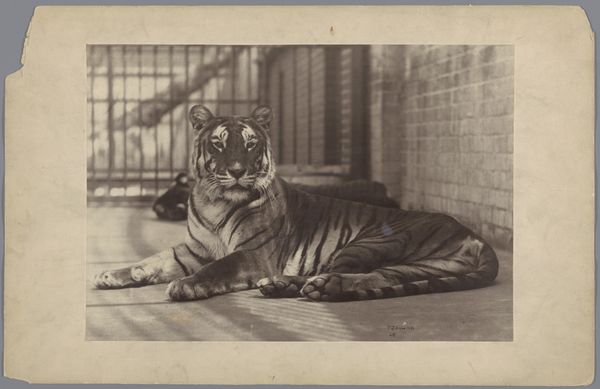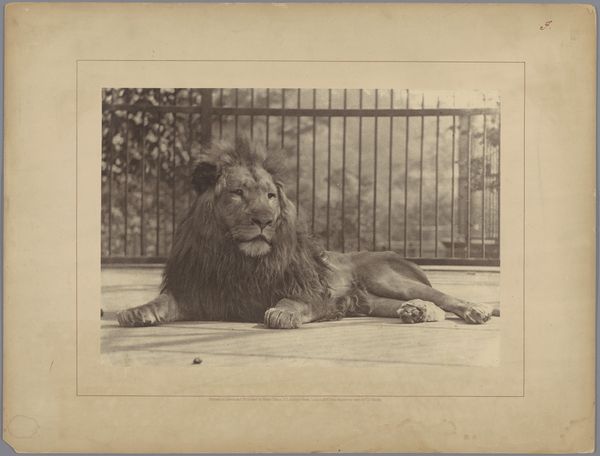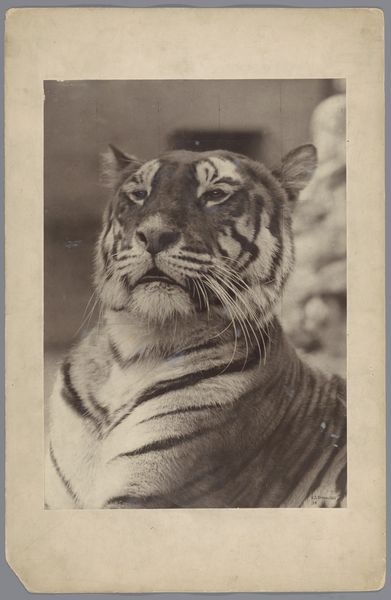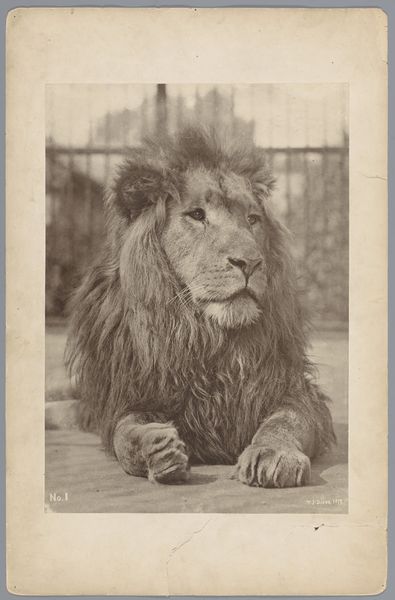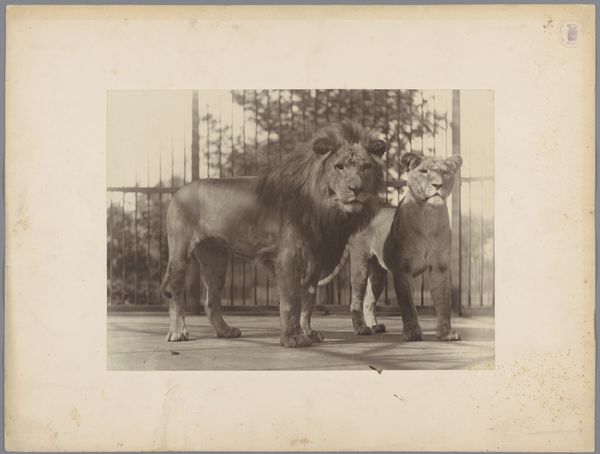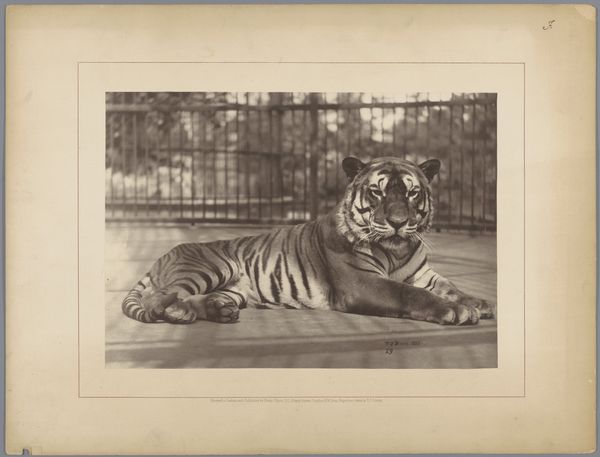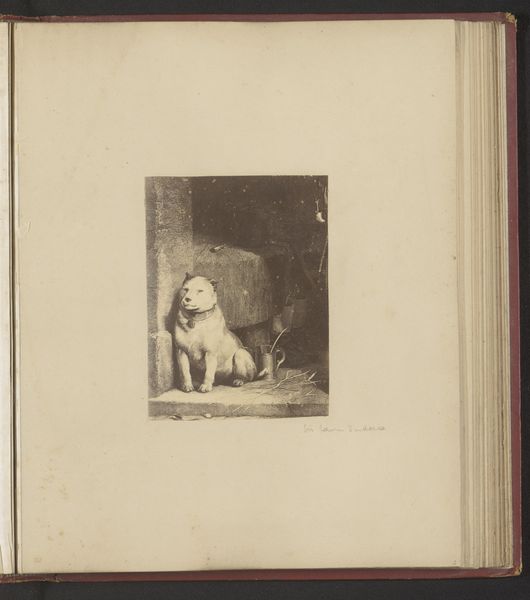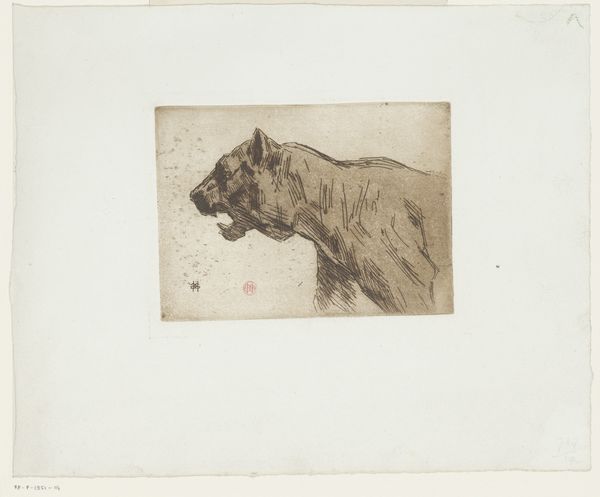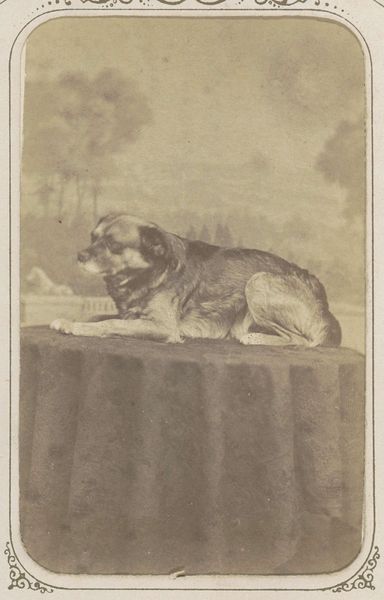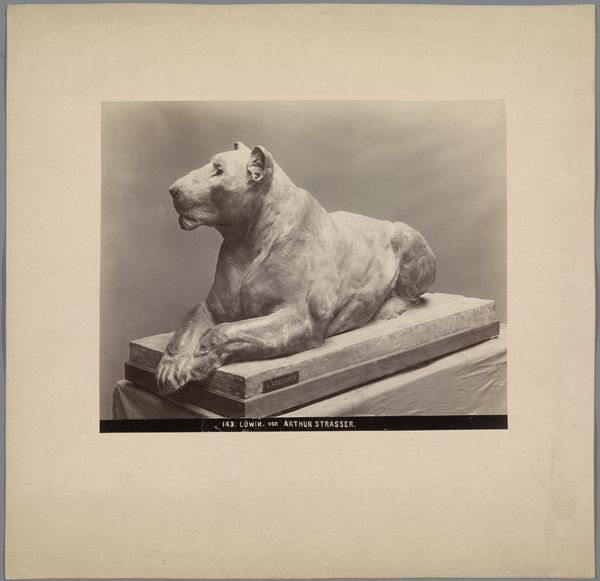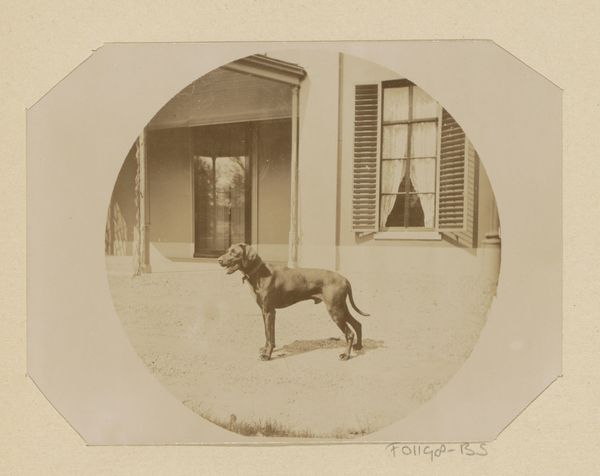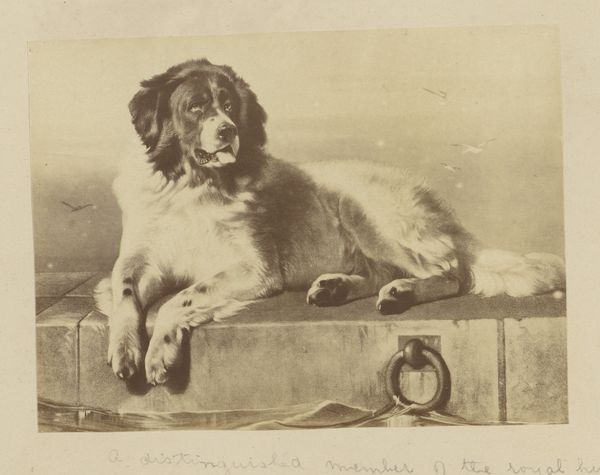
photography
#
animal
#
landscape
#
photography
#
19th century
#
realism
Dimensions: height 241 mm, width 345 mm
Copyright: Rijks Museum: Open Domain
Editor: This is "Lioness in a Zoo in London," a photograph taken around 1879 by Thomas James Dixon. The lioness, captured in tones of sepia, is resting in what looks like an enclosure. The image has a slightly melancholic air to it. How do you interpret this work, especially considering its historical context? Curator: That melancholy you perceive speaks volumes, I think, about the shifting role of nature and the rise of institutional displays of wildlife. The image presents us with a seemingly 'natural' scene, but we're acutely aware of the artifice – the lioness is in a zoo. The very act of photographing her in this contained environment underscores a particular human-animal power dynamic prevalent in the late 19th century. Editor: So, the photograph isn't just about documenting the animal, but also about what the zoo represented at the time? Curator: Precisely. Zoos became popular displays of colonial power, exhibiting animals from distant lands. Consider what it meant to capture, contain, and display such a powerful creature. It highlights human dominance over nature and reinforces prevailing societal hierarchies. How might this photograph be viewed as a form of visual consumption? Editor: That's fascinating. It makes me consider the public's fascination with exotic animals at the time, and how this photo contributed to shaping perceptions. I see it now as less a portrait of a lioness, and more a portrait of Victorian attitudes. Curator: Indeed. By framing the lioness this way, Dixon unknowingly captures more than just the animal; he encapsulates an era's values and assumptions about nature, power, and control. Hopefully this changed in the following centuries... Editor: It is really sobering to consider these contextual nuances. Thank you.
Comments
No comments
Be the first to comment and join the conversation on the ultimate creative platform.
